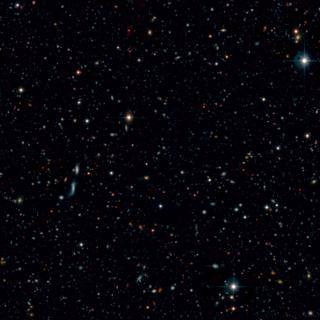Bibcode
de Diego, J. A.; Polednikova, J.; Bongiovanni, A.; Pérez García, A. M.; De Leo, M. A.; Verdugo, T.; Cepa, J.
Referencia bibliográfica
The Astronomical Journal, Volume 150, Issue 2, article id. 44, 10 pp. (2015).
Fecha de publicación:
8
2015
Número de citas
38
Número de citas referidas
38
Descripción
Microvariability consists of small timescale variations of low amplitude
in the photometric light curves of quasars and represents an important
tool to investigate their inner core. Detection of quasar
microvariations is challenging because of their non-periodicity, as well
as the need for high monitoring frequency and a high signal-to-noise
ratio. Statistical tests developed for the analysis of quasar
differential light curves usually show either low power or low
reliability, or both. In this paper we compare two statistical
procedures to perform tests on several stars with enhanced power and
high reliability. We perform light curve simulations of variable quasars
and non-variable stars and analyze them with statistical procedures
developed from the F-test and the analysis of variance. The results show
a large improvement in the power of both statistical probes and a larger
reliability when several stars are included in the analysis. The results
from the simulations agree with those obtained from observations of real
quasars. The high power and high reliability of the tests discussed in
this paper improve the results that can be obtained from short and long
timescale variability studies. These techniques are not limited to
quasar variability; on the contrary, they can be easily implemented for
other sources, such as variable stars. Their applications to future
research and to the analysis of large-field photometric monitoring
archives could reveal new variable sources.
Proyectos relacionados

Evolución de Galaxias
El estudio de la evolución de las galaxias es un tema crucial de la Astronomía Extragaláctica moderna. Permite vincular las galaxias locales con las primeras que existieron en el universo. Pero para poder abordarlo es preciso obtener censos estadísticamente significativos de galaxias de distintas luminosidades, a distintas distancias
Jorge
Cepa Nogue